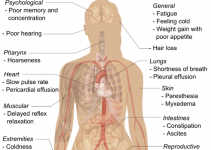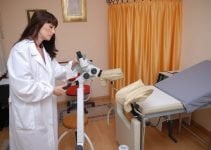Endometriosis is a serious condition that effects 176 million women [1][2]. Women are at risk from the time of their first period. It can strike a young woman during the prime years of their lives when they are in school, beginning their careers or starting a family.
It negatively affects both their personal and professional lives. It is a wise idea for all women to know the signs of endometriosis. That will help them get diagnosed early if they have the disease.
Endometriosis is a condition that occurs in women when endometrium the tissue that forms innermost lining of the uterus, is found outside the uterus. The most common location of the tissue in endometriosis is in the reproductive organs, including the uterus, fallopian tubes, and ovaries.

It can also be found in the potential spaces between the bladder, uterus/vagina and rectum. Less commonly, it can be found on the bladder, bowel, intestines, appendix or rectum. It is important to understand the different types of endometriosis in order to understand the cause of it and to select the appropriate treatment.
In endometriosis, ectopic endometrial tissue can be found in between the bladder and uterus, between the rectum and vagina, attached to intestines, appendix, bladder, or rectum. It is really necessary to investigate site and size of ectopic endometrial tissue to better plan treatment and prognosis of disease.
The Signs of Endometriosis
To begin with, you should know that different women experience the signs the endometriosis in different ways. Not all women who have endometriosis suffer from severe symptoms that trumpet their condition. Some women may experience mild symptoms that hint at the onset of the condition. Other women might experience moderate symptoms.
It is important to note that the severity of pain experienced by a woman suffering from endometriosis does not always correlate with what stage of the condition they are in. It is possible to be in less advanced stages of endometriosis but suffer from excruciating pain. Likewise, it is possible to be in a more advanced stage and have mild discomfort.
Signs include:
- Pelvic pain is by far the most typical symptom
- Increased pain and discomfort during your period
- Painful periods, with pain concentrating in your lower abdomen before and during your period
- Having cramps for a week or two around the time of your period
- Experiencing unusually heavy bleeding during your period or during the time in between periods
- Painful or uncomfortable bowel movements
- Pain after sexual intercourse
- Problems conceiving a child
- Pain in the lower back during your menstrual cycle
The Stages of Endometriosis
Endometriosis can be at one of four different stages when you are diagnosed. It can also advance after diagnosis.
The four stages are:
- minimal
- mild
- moderate
- severe
When your doctor diagnoses you with endometriosis, they will look at a few different aspects of your condition in order to determine which stage of the condition you are in. They will also continually reevaluate after diagnosis to determine if you have advanced into a higher stage.
The doctors look at the endometrial implants (the endometrium tissue outside the uterus) and determine a few things about them, including the size, the location, the number, and the depth. By looking at all of those aspects, they are able to determine what stage of endometriosis you are in.
Stage One: Minimal
Stage one is appropriately named minimal. In this stage you have only small lesions or wounds from endometrium tissue, and the endometrial implants are shallow. They are typically located on your ovary, and you might have some inflammation of your pelvic cavity. No adhesions.
Stage Two: Mild
Stage two moves beyond minimal into mild. In this stage you continue to have shallow lesions on your ovary and light endometrial implants. Now they have also moved onto your pelvic lining, without significant adhesions.
Stage Three: Moderate
Stage three moves beyond mild into moderate. In this stage there will be more lesions. There will also be deeper endometrial implants on your ovary and pelvic lining with weak adhesion formation.
Stage Four: Severe
Stage four moves beyond moderate into severe. In this stage the endometrial implants on both ovaries and the pelvic lining will be deep. There will be yet more lesions. At this stage there might also be lesions on your fallopian tubes and bowels. The endometrial implants have gone beyond your reproductive organs. And there is thick adhesion formation.
Your doctor will look at your symptoms and perform an exam to determine what stage you are in. That exam will include your personal and familial medical history. It will also include a pelvic exam, as well as an ultrasound.
You might have a laparoscopy, a minor surgical procedure that allows your doctor to have a better look at your pelvic area. It allows your doctor to remove your lesions. Treatment may include other surgical procedures and even a hysterectomy (removal of your uterus), though a hysterectomy alone does not cure endometriosis.
You still have to excise any lesions outside of the uterus. Treatment can also include hormonal IUDs, pain killers (such as NSAIDs), low-dose oral contraceptives, and GnRH therapy (such as Lupron).
You should always consult your doctor if you feel you have symptoms of endometriosis to get a proper diagnosis and, if necessary, treatment.
References
- Rogers PA, et al. Priorities for endometriosis research: recommendations from an international consensus workshop. Reprod Sci 2009;16(4):335-46.
- Adamson GD, et al. Creating solutions in endometriosis: global collaboration through the World Endometriosis Research Foundation. J of Endometriosis 2010;2(1):3-6.



